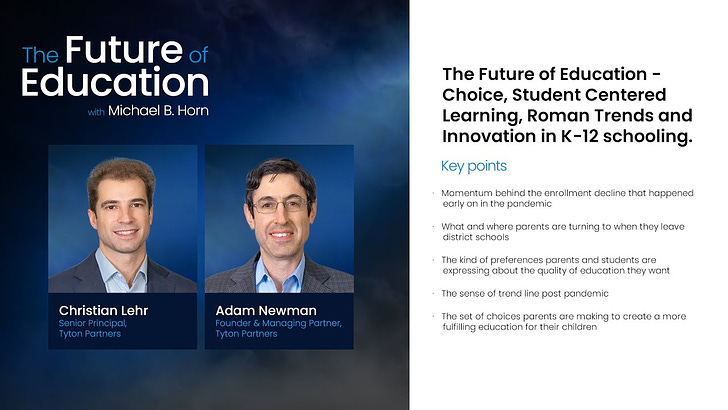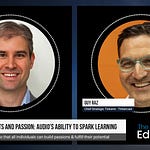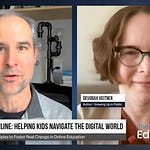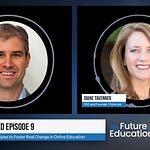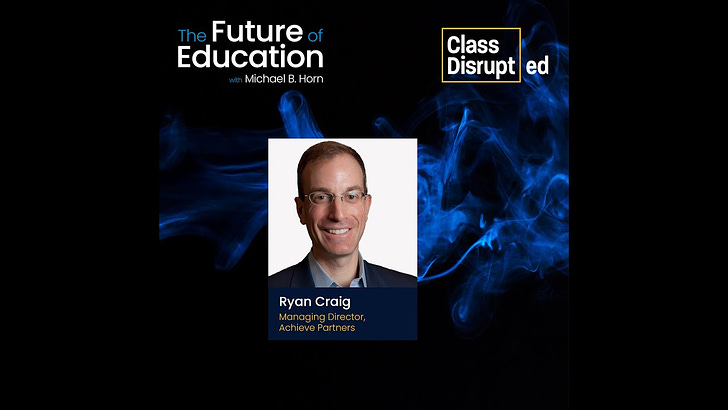Parents are increasingly voting with their feet and making novel schooling choices for their children. What's behind the moves and their desires? Adam Newman and Christian Lehr of Tyton Partners joined me to talk about the vast research they have done in this space to learn about why parents are making choices—or even where they aren't choosing something different, what their preferences are. In this conversation they detail their research and what we're learning about parent choice, student-centered learning, and the future of education. You can listen to the conversation above, watch it below, or, with a paid subscription, read the full transcript below.
Michael Horn: We have a great topic lined up for you all today. It involves choice, student-centered learning, enrollment trends, innovation and more, all in K-12 schooling. To help us unpack that, we have two terrific guests, Adam Newman, the founding and managing partner at Tyton Partners, as well as Christian Lehr, senior principal at Tyton Partners. They are the authors of a series of research reports that are just fantastic, Choose to Learn and School Disrupted. I like it not just because it has the name disrupted in it, but they have really unpacked these trends around choice, some of these enrollment trends we're seeing in K-12 school districts, parents' desires and for what they want for their kids. I'm just excited to unpack a lot of this.
First, Adam, Christian, thanks for being here.
Adam Newman: Hey. Great. Great to be here with you, Michael. Thanks for including us.
Christian Lehr: Yeah. Thanks, Michael.
Horn: Yeah, you bet, so a lot of interesting findings in these reports that you've published. I've actually written about some of your findings, but I'm excited to hear about it directly from you guys. I think one of the most interesting things that you found frankly is that the momentum behind the enrollment declines that we saw early on in the pandemic from school districts is not abating at least as of spring of 2022, and so I'm just curious. That finding seems to have gotten more attention over the last several weeks, but why is that from what your research is showing?
Newman: Yeah. No. Absolutely. It's a great question. Listen, honestly, we were surprised ourselves really to see the magnitude of the transition out of public district schools and into other options. A couple important factors, our enrollment numbers are through the lens of parents. Our work is based on a large, nationally representative survey of parents of children in K-12. It is not the official data that states capture. It's the parent perspective, and it's really focused on what they believe they are doing or want to do for their kids, which we think is incredibly important. Parents are a voice that we don't often hear from regularly in this debate. Really, we saw two things that were primarily driving the dis-enrollment in public district schools from the spring '21 through spring 2022.
The first was academic quality and perceptions of academic quality, which we could spend the whole hour talking about. I mean, I think, for different parents, that meant different things. Certainly, within the context of the pandemic, it meant the quality of the experience, the educational experience their students were getting based on the type of school model and format that they were participating in. The second dynamic was actually an interesting one to us and a little bit counterintuitive, which was school safety, but, interestingly, it was not focused per se on health, health-oriented safety issues related to COVID, but some of the more, unfortunately, age-old issues of bullying and violence in our schools that are really independent of the pandemic and those effects, but certainly as we see unfortunately in the news on an all-too-frequent basis continue to be really prominent.
Those are really two of the drivers, and I think the third one that I think underpins that is the pandemic. You've written about this, Michael, in a lot of your work, too. Parents had a front row seat into what their educational experience was like for their students as a result of the pandemic, and they realized it was not what they wanted it to be or what it could be, and so this idea of parent agency married with a proliferation of choices and alternatives that started to emerge in response to the pandemic we think are what were many of the drivers that we saw in that fairly significant 10% dis-enrollment from the district public schools from the perspective of parents.
Horn: One of the most interesting pieces of that data point that you just said, the 10%, was that your sense was only 10% of that if I recall was due to the demographic declines or dropouts or delayed entry into K-12, which we heard a lot about the redshirting phenomenon in the wake of this, but the academic concerns, the bullying which frankly, if you talk to educators, they say that the school violence issues that they were dealing with were a lot worse coming out of the pandemic in the return to school as well. That adds up I guess, but I guess I'm just curious in terms of what you found that parents are choosing instead. What are they turning to when they make that choice to leave that district school? You mentioned that there's a lot more options. They feel like they have a sense of agency. What are you learning about in terms of the actual choices that they're making in a proactive way?
Listen to this episode with a 7-day free trial
Subscribe to The Future of Education to listen to this post and get 7 days of free access to the full post archives.


